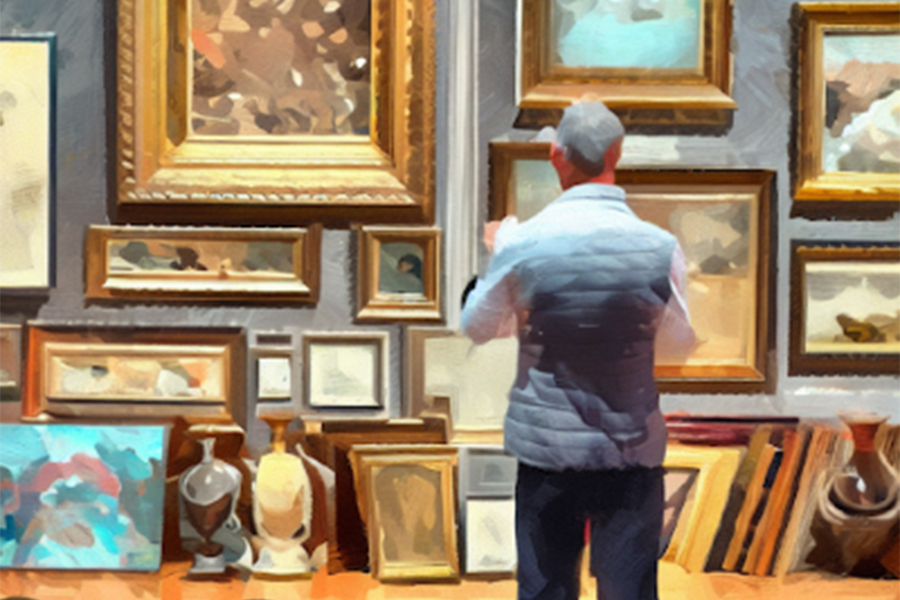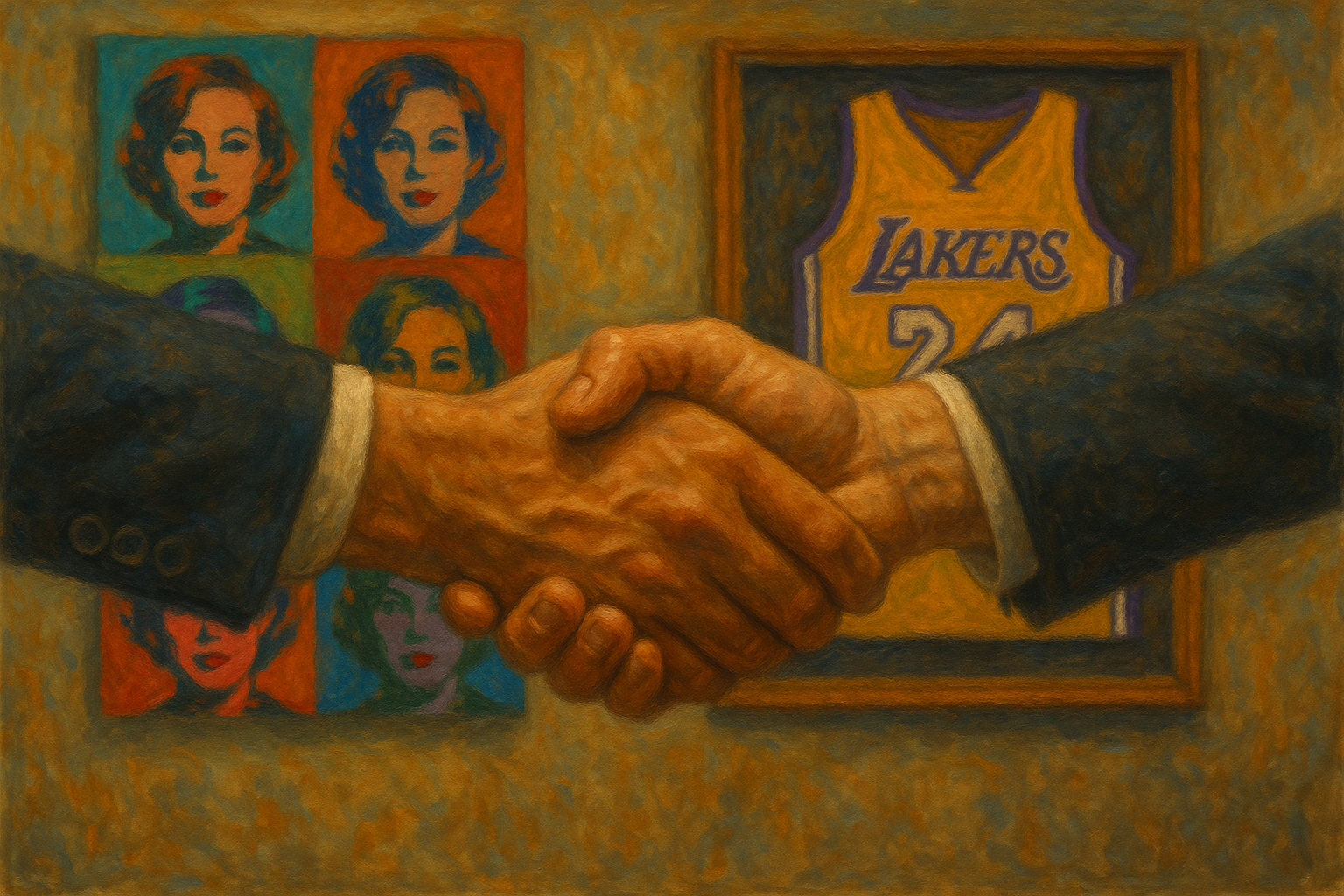Destiny Family Office specializes in helping high-net-worth collectors understand, account for, and protect the financial might of their collections, both for themselves and their families. Here, we discuss the many challenges that heirs of high-net-worth collectors may face upon inheriting a collection.
If you have a valuable collection you’d like to include in your financial, tax and estate planning in an effort to prevent those challenges, contact our Destiny Family Office team today. And don’t forget to self-assess your planning to date by completing our Collectibles Scorecard.
If you were hit by a bus tomorrow, would your family know what’s in your collection and what to do with it?
For many collectors, the answer is a resounding and startling no. No idea.
Over the years, your hobby has been just that: yours. Perhaps your family doesn’t share your interest in your collecting pursuit of choice, and maybe their faces may not always brighten with intrigue as you reveal your latest acquisition. While that may be disheartening, we can’t eschew responsibility in ensuring our families are prepared to handle our extensive collections in the event of our passing or incapacitation.
Inheriting cash and marketable securities is relatively simple. No formal playbook is required. Other assets like real estate are perhaps more complex, but the playbook is readily available. A valuable collection of art, memorabilia, or other collectibles, though, is a treasure fraught with nuance and risk. Without the proper information, your family may instead perceive it as a daunting hoard richer in headaches than in monetary value, particularly if they don’t know its worth.
To ease this burden and flatten the learning curve, collectors can proactively share pertinent information with their families. By educating your loved ones on matters from identification to valuation and authentication, you can better prepare them to understand and manage your collection.
Identification
Your family needs to know what it is that you own, beyond the vague details of passing conversation.
It seems obvious, doesn’t it?
But again, question whether or not your family knows what’s in your collection in detail. And if not, is that information readily available and accessible to them?
At a minimum, collectors should catalog the key details of the high-value items in their collection. For example, here are the types of identifying information that collectors should provide in a few different categories.
Fine Art
- Artist
- Title of Artwork
- Year Produced
- Dimensions
- Description (Lot Essay/Description from auction if applicable)
Sports Memorabilia
- Type of Memorabilia (Jersey, Bat, Ball, etc)
- Associated Player and/or Team
- Usage (Game-Worn?)
- Associated Year/Season
- Occasion/Milestone if applicable (i.e. 500th Home Run Ball)
- Description
Watches
- Reference Number (will take care of most of the below, but worth including in the interest of thoroughness)
- Watch Brand
- Watch Model
- Year Produced
- Case Size
- Case Material
- Bracelet Type
- Status of Original Box/Papers
Many, if not all, of these details will be obvious to you. When you look at a game-worn jersey in your collection, it’s as if all the relevant information is woven into its fabric. But when your family looks at that same jersey, they see only mesh and stitching.
Make no assumptions. By exercising caution and pursuing thoroughness in cataloging your collection, you’re taking substantial strain off your family’s plate. With accurate and relevant information, their ability to properly care for or market your collection increases significantly.
Valuation
While identifying information is immensely helpful, it still leaves unfamiliar heirs awash ignorant of an item’s worth. Finding out they own an Andy Warhol painting or a Michael Jordan-worn jersey alerts them to the idea that they possess something valuable. But the magnitude of that value would remain a massive unknown.
To them, $100,000 may sound like a lot for a painting, even for a celebrated artist. Or maybe they’d be overjoyed to receive $50,000 for a jersey you won at auction for $500,000.
Your task: provide them a narrower range of value for items in your collection.
You can accomplish that feat with a few pieces of information. First, you can provide information on when you bought it and for how much. If it was a recent acquisition, then this data point would be quite informative. If it was decades ago, then we don’t want to rely on it.
In the latter case, you may wish to provide your family with updated valuation information obtained via a formal appraisal if you’ve had one done recently. And if you adhere to our strongly held belief that regular appraisals are worthwhile, then hopefully you have. If not, you may provide comparable sales information or your best estimate.
The goal here is not necessarily to be laser-precise, but rather to provide your heirs with a clearer understanding of an item’s worth. We do that for multiple reasons: to ensure they properly protect the item, to mitigate their vulnerability to bad actors, and for proper bookkeeping. Those two relatively simple categories of information – identification and valuation – will significantly derisk your family’s experience with your collection.
Authentication
Your family will happily take you at your word about what you own. The market at large, however, may not be as accommodating. For potential buyers, your word will not provide sufficient proof of an item’s authenticity. And in some cases, an item may not be worth very much without that proof.
If a reputable service has authenticated your item, include that information as you catalog your collection.
- Who authenticated it? (Company and contact person)
- When did they authenticate it?
- Is there an associated reference or serial number?
- Is there associated paperwork?
Of course, if the answer to the final question is yes, include that paperwork or share its location. Similarly, providing contact information for an employee of the authenticator may prove helpful in procuring backup or replacement paperwork and further confirming any missing details.
It may also be critical that you include information on where you bought the item. In fine art, provenance – meaning information on the chain of ownership of a work – is of the utmost importance, and you can generally find that information in any auction lot description. Be specific about where and when you acquired the work. If it was in a Sotheby’s auction, detail the event name, the date, and even the lot number. If it was from a gallery, include the location, name, and relevant contact information. Not all of this information may be necessary, but exercising specificity and thoroughness will further mitigate any risk to the item’s future marketability.
Disposition
Whether or not you suspect your family will keep your collection, don’t force them to start from scratch in figuring out how to sell it. Even the most savvy Googler would struggle to determine which auction houses are the reputed leaders in a specific category of collectible asset. You, however, have a lifetime of experience following your market of choice, and you’ve likely formed some opinions.
To bring your heirs up to speed:
- Provide information on where you bought each item.
- Provide general information on which auction houses and marketplaces you’ve found to be most proficient in the categories featured in your collection.
- If you’ve established significant relationships with providers, include their contact information.
- Include any details on fee concessions or preferred pricing you might have received over the years in recognition of your business.
With this information, your family will have a more targeted sense of how they can best sell items from your collection while realizing full value and avoiding beginner’s pitfalls. If you’d like to further simplify the process, you can make arrangements with auction houses while you’re living as part of the estate planning process, including pre-negotiated terms.
Storage & Protection
Much like the identification details, the location of your valuable items is an obvious but essential piece of information. If you store items in a third-party facility, ensure you provide instructions on accessing them. Similarly, if they require special storage considerations, include that information. For instance, do the items require storage in a cool, dry setting? Are they artworks that must avoid regular exposure to sunlight for preservation purposes?
Some of this information will be additionally relevant for insurance purposes due to certain coverage requirements. On that topic, if you have insurance coverage for your collection, those details will be important:
- Does the policy transfer or expire upon your death?
- What does it cover, and for how much?
- Are there requirements in terms of storage, protection, or travel?
- What kind of incidents does it offer protection from?
- What is the cost?
This information will be relevant whether the policy transfers or not, as heirs may wish to seek, update, or otherwise adjust coverage in the future.
By accurately and thoroughly cataloging your collection, you ensure that your family or heirs possess the information they need to assume ownership. Inheriting an extensive and valuable collection – though fortuitous – can be an immensely intimidating and stressful experience. Providing a thoughtful and well-organized catalog of information can significantly reduce that stress while also mitigating the vast risks that might accompany your family’s relative inexperience in your collecting field of choice.
Ensure that your encyclopedic knowledge of your collection escapes the confines of your brain and equips the next generation for the incredible gift – and responsibility – they’ll receive.
If you have a valuable collection you’d like to include in your financial, tax and estate planning, contact our Destiny Family Office team today. And don’t forget to self-assess your planning to date by completing our Collectibles Scorecard.




